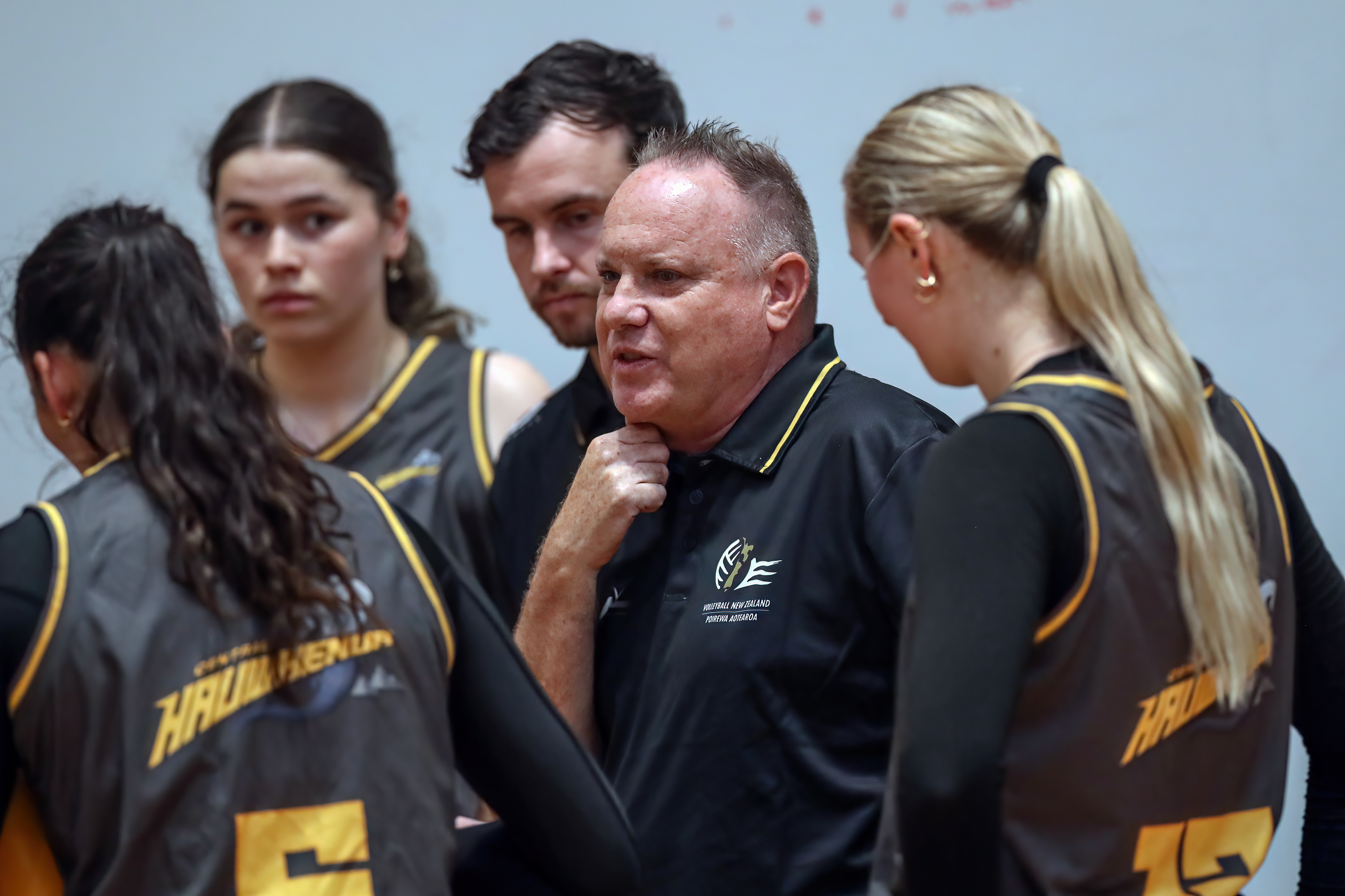In recent weeks, I experienced my first taste of face-to-face volleyball on a grand scale. At Club Champs… 82 teams from across the country, around 900 players, over two venues. While it was a stimulation adjustment at first, the volleyball was impressive! I learned a lot about the game of volleyball, thanks in part to Jock Murley, walking me through rotations, positions, etc. (I’m still waiting on that quiz!). And most recently, at the National Volleyball League…bringing together the top 50 men’s and women’s players across the country. With my coaching lens on, I wanted to share some observations from Club Champs and NVL – about Group Dynamics. Thank you in advance for reading on. Please feel free to comment.
One of the first things I noticed – everyone goes for everything. Players are diving for balls, jumping over chairs to keep the ball in play. On top of that, the more successful teams can integrate their efforts flawlessly. Group members understand their roles, have the confidence and competence to execute their role, and have a willingness/desire to play their part within the system. Interestingly, a group’s effectiveness often falls short of their potential for two main reasons. Coordination – a groups failure to coordinate the contributions of individual members. Motivation – members do not exert maximal effort.
Ringelmann initially observed that during a tug-of-war activity, performance decreased as the group size increased. During a 1on1 tug-of-war task, participants pulled close to 100% of their potential. With eight in the team, each member contributed only 49% of their potential productivity! Notably, members of larger groups experience greater difficulties cooperating compared to smaller groups and members reduce their effort when they know there are others contributing. While volleyball is much more complex than tug-of-war, there is something to be said about how coordination and motivation can impact group productivity. Its also interesting to note how this phenomenon might play out in indoor volleyball, with 6 on-court players and numerous substitutes, and how it plays out for beach volleyball in a 2-on-2 setting.
What does this mean for your coaching practice?
Firstly, role clarity is suuuupperr important. There is evidence to suggest athletes who have a vague understanding of their roles tend to report weaker perceptions of team cohesion.
Do the participants understand the sport and their role well enough?
Are participants given enough time to learn their roles?
Are coaches consistent with their communication?
Secondly, how do we teach coordination? Eccles explained that athletes must align three things to achieve optimal teamwork: action, timing, and location. The aim here is for members to achieve a specific action (set - spike) at a specific time, at a specific location. If the timing is off, or the pass is out of reach, coordination diminishes. Within a team setting like volleyball, completing a task requires multiple brains. Therefore, the aim is to achieve a shared knowledge state – “on the same page” so that team members can draw on the same knowledge during task performance, leading to effective coordination.
Some things to consider?
- Train how you play – make it as game-like as possible.
- Experiment with changing positions – put yourself in your teammate’s shoes.
- Co-construct the game plan with the players.
Finally, can we teach attitudes and values? When we’re coaching volleyball, we might think of teaching the physical stuff – the technical skills, how to move, etc. Now we can play the game, we might consider how to improve the way players think – tactical awareness, problem-solving, decision making, etc. Can we also coach emotional responses, feelings, and attitudes? Within your coaching practice, are players recognising and responding to feelings and emotions? More importantly, do athletes internalise important attitudes and values that lead to coordination and effort?
Before you go… some food for thought regarding group dynamics and team cohesion. Consider the participants you coach…
Have clarity and feel satisfied with their roles?
Do they feel affective? Do they contribute?
Do they feel a sense of belonging?
Are your players on the same page?
Fantomash
Tpb
838
Kim, J., Panza, M., & Evans, M. B. (2021). Group dynamics in sport. In Z. Zenko & L. Jones (Eds.), Essentials of exercise and sport psychology: An open access textbook (pp. 613–642). Society for Transparency, Openness, and Replication in Kinesiology.
- W. Eccles & K. B. Tran (2012) Getting Them on the Same Page: Strategies for Enhancing Coordination and Communication in Sports Teams, Journal of Sport Psychology in Action, 3:1, 30-40,
Anderson, L.W., Krathwohl, D.R., Airasian, P.W., Cruikshank, K.A., Mayer, R.E., Pintrich, P.R., Raths, J., Wittrock, M.C. (2001). A Taxonomy for Learning, Teaching, and Assessing: A Revision of Bloom’s Taxonomy of Educational Objectives. New York: Pearson, Allyn & Bacon
Ingham A. G., Levinger G., Graves J., Peckham V. (1974) The Ringelmann effect: Studies of group size and group performance. Journal of Experimental Social Psychology 10: 371–384.





